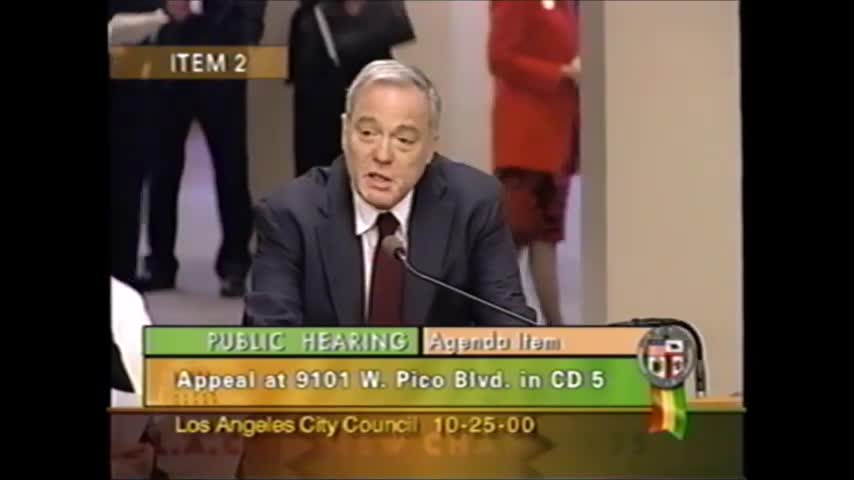Council certifies Brightburn EIR, directs citywide monitoring and enforcement follow‑up
October 31, 2025 | Los Angeles City, Los Angeles County, California
This article was created by AI summarizing key points discussed. AI makes mistakes, so for full details and context, please refer to the video of the full meeting. Please report any errors so we can fix them. Report an error »

The City Council on a divided vote certified the Environmental Impact Report (EIR) for Brightburn Energy’s proposal to modernize a longstanding oil workover site and adopted committee findings recommending mitigation, monitoring and coordinated enforcement.
Opponents and neighborhood advocates urged denial of the project’s EIR certification, citing lack of baseline ambient monitoring, absence of enforceable mitigation monitoring procedures, and concern that the project authorizes more frequent workover operations (including 24‑hour activities). Appellants’ attorney Joel Moskowitz said the EIR lacked a baseline and an enforceable mitigation monitoring program and warned the council that those omissions could be the basis for a legal challenge.
Project proponents, and multiple state and federal agencies that reviewed the EIR, told the council the modernization reduces local diesel emissions by replacing open‑air diesel-powered workover rigs with an enclosed, electrically powered derrick and related controls. Greg Brown, counsel for Brightburn Energy, cited the California Air Resources Board (ARB) and other agencies’ letters noting an air‑quality improvement from the proposed change. The zoning administrator described a monitoring and enforcement regime that makes the Zoning Administrator the citywide coordinator for periodic reports from responsible agencies and a defined response pathway (including shutdown authority if thresholds are exceeded).
Councilmember Mike Feuer said he had sought confirmation from ARB, AQMD, EPA and other agencies; those agencies (except for the Bureau of Land Management, which said it had no expertise to opine) corroborated the EIR’s central conclusions about air‑quality improvements. The council also received commitments from the Department of Conservation and the fire department to hard‑wire alarms and response protocols related to methane or hydrogen sulfide levels and from AQMD to conduct additional on‑site testing and enforcement where warranted.
Votes were taken in two parts: recommendations 1 and 2 (deny appeal; certify the EIR and adopt the findings) passed 9–1; recommendation 3 (directing a citywide effort to adopt monitoring/enforcement coordination similar to this project) passed 11–0. The council also instructed the zoning administrator and related agencies to implement the specific monitoring, reporting and red‑flag procedures outlined in the committee report.
The zoning administrator and staff were directed to coordinate multi‑agency reporting, ensure timely public reporting and to move forward with mechanisms that allow the city and relevant agencies to suspend operations if monitoring indicates public‑health or safety thresholds are exceeded. The council asked the police, fire, conservation, AQMD and other responsible agencies to finalize written agreements and provide the Zoning Administrator with a path for immediate action in the event of hazardous levels.
Opponents and neighborhood advocates urged denial of the project’s EIR certification, citing lack of baseline ambient monitoring, absence of enforceable mitigation monitoring procedures, and concern that the project authorizes more frequent workover operations (including 24‑hour activities). Appellants’ attorney Joel Moskowitz said the EIR lacked a baseline and an enforceable mitigation monitoring program and warned the council that those omissions could be the basis for a legal challenge.
Project proponents, and multiple state and federal agencies that reviewed the EIR, told the council the modernization reduces local diesel emissions by replacing open‑air diesel-powered workover rigs with an enclosed, electrically powered derrick and related controls. Greg Brown, counsel for Brightburn Energy, cited the California Air Resources Board (ARB) and other agencies’ letters noting an air‑quality improvement from the proposed change. The zoning administrator described a monitoring and enforcement regime that makes the Zoning Administrator the citywide coordinator for periodic reports from responsible agencies and a defined response pathway (including shutdown authority if thresholds are exceeded).
Councilmember Mike Feuer said he had sought confirmation from ARB, AQMD, EPA and other agencies; those agencies (except for the Bureau of Land Management, which said it had no expertise to opine) corroborated the EIR’s central conclusions about air‑quality improvements. The council also received commitments from the Department of Conservation and the fire department to hard‑wire alarms and response protocols related to methane or hydrogen sulfide levels and from AQMD to conduct additional on‑site testing and enforcement where warranted.
Votes were taken in two parts: recommendations 1 and 2 (deny appeal; certify the EIR and adopt the findings) passed 9–1; recommendation 3 (directing a citywide effort to adopt monitoring/enforcement coordination similar to this project) passed 11–0. The council also instructed the zoning administrator and related agencies to implement the specific monitoring, reporting and red‑flag procedures outlined in the committee report.
The zoning administrator and staff were directed to coordinate multi‑agency reporting, ensure timely public reporting and to move forward with mechanisms that allow the city and relevant agencies to suspend operations if monitoring indicates public‑health or safety thresholds are exceeded. The council asked the police, fire, conservation, AQMD and other responsible agencies to finalize written agreements and provide the Zoning Administrator with a path for immediate action in the event of hazardous levels.
View full meeting
This article is based on a recent meeting—watch the full video and explore the complete transcript for deeper insights into the discussion.
View full meeting
